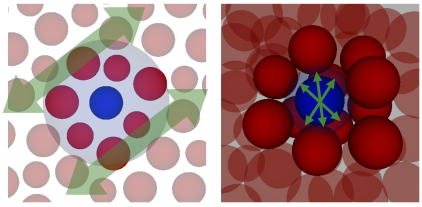Vibration Amplitude of Low-Dimensional Glassy System Goes Infinity

Glassy systems behave like a solid, in spite of its liquid-like disordered structure. It is a long-standing problem how these glassy systems are different from (or similar to) crystalline solids. A cutting-edge viewpoint — dimensionality dependence of glassy fluctuation — reveals existence of large-scale vibrational fluctuation similar to that in crystal arising from so-called Mermin-Wagner theorem. In two dimensions, vibration motion is found to mask up the whole body with an amplitude that goes to infinity in the macroscopic limit. As a result, a group of particles move coherently with each passing moment. In three dimensions, a particle vibrates virtually inside the cage formed by its neighbor particles, and no such long-ranged vibration appears. The large-scale vibrational motions in two dimensions largely affect the distribution of the particle mobility and the appearance of cooperative dynamics. However, consistent analysis of its inherent modality of relaxation (cage motion) is brought to realization by using a dynamical variable that can separate out the coherent motion. Our argument is potentially applicable for soft materials with low-dimensional degrees of freedom including 2D colloids, membranes, and liquid crystals, and also for strongly correlated electron systems (e.g. organic conductors, superconducting vortices) with frustrations.
Journal: Physical Review Letters
Title: “Unveiling dimensionality dependence of glassy dynamics: 2D infinite fluctuation eclipses inherent structural relaxation"
Authors: Hayato Shiba, Yasunori Yamada, Takeshi Kawasaki, and Kang Kim
doi:10.1103/PhysRevLett.117.245701